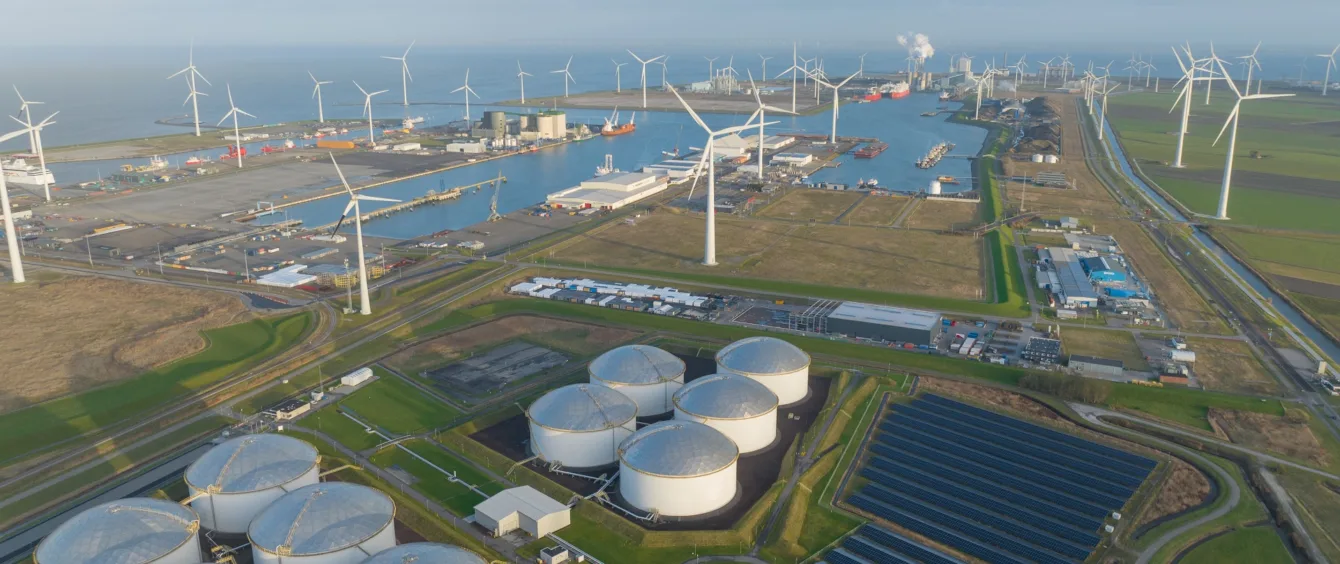
The energy transition is moving forward. This is also reflected in Europe's carbon dioxide emissions, which fell in 2022. Also through RWE's commitment, such as at the Eemshaven site (photo), where a leading energy and hydrogen hub for Europe is to be created.
© Make more Aerials, shutterstock.com
EU carbon dioxide emissions from fossil fuel combustion for energy use, excluding Sweden, fell by 2.8% last year, according to the EU’s statistical office Eurostat, owing primarily to a sharp decline in natural gas use. The drop in gas use was driven by high prices and voluntary efforts to conserve gas promoted by the EU and national governments.
These emissions represent about 75% of the EU’s total emissions. They provide an early look at the situation in 2022, but do not take into account all imports and exports of different primary and derived energy products. The data is thus likely to differ from that provided by national statistical agencies.
Estonia relies on oil shale for power generation
The data does not include Sweden, owing to expected revisions to the country’s oil data for 2021 and 2022. In addition, monthly data for oil shale emissions in Estonia is excluded.
The country mined 10.7 million tons of the carbon intensive fuel in 2022, up from 9.21 million tons in 2021, according to data from the Estonian ministry of the environment. Estonia increased oil shale for power generation last year to combat the loss of both gas and power imports from Russia.
Breaking the data down by fuel shows that emissions from solid fossil fuels, excluding peat, rose by 3.4%, while emissions from liquid fossil fuels – oil and oil products – grew by only 1.1%. However, these increases were more than offset by a 13% reduction in natural gas emissions. Emissions from the use of peat fell 6.0%, despite increases in Estonia and Latvia.
Strongest decline in the Netherlands
The data shows emissions reductions in 17 EU countries. The largest declines were in the Netherlands (-12.8%), Luxembourg (-12%), Belgium (-9.7%) and Hungary (-8.6%). The largest increases were in Bulgaria (12%), Portugal (9.9%) and Malta (4.1%).
In Germany, which accounts for a quarter of the EU’s total emissions from energy use, solid fuels emissions rose by 4.3%, while natural gas emissions fell 15.4%. The total figure, including a 0.7% fall in emissions from fossil fuel liquids, was a net reduction of 3.1%.
In percentage terms, the largest drops in carbon emissions from natural gas came in Finland (-47.4%), the Baltic States and Denmark (-27.4%), while the largest increases in carbon emissions from solid fuels were in Spain (34.3%) and Italy (33.4%).
The data does not include emissions from non-renewable waste nor the minor category ‘other fossil fuels’.